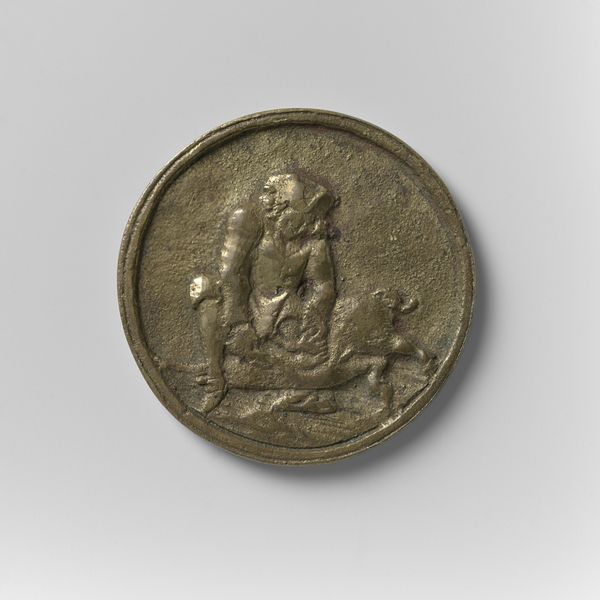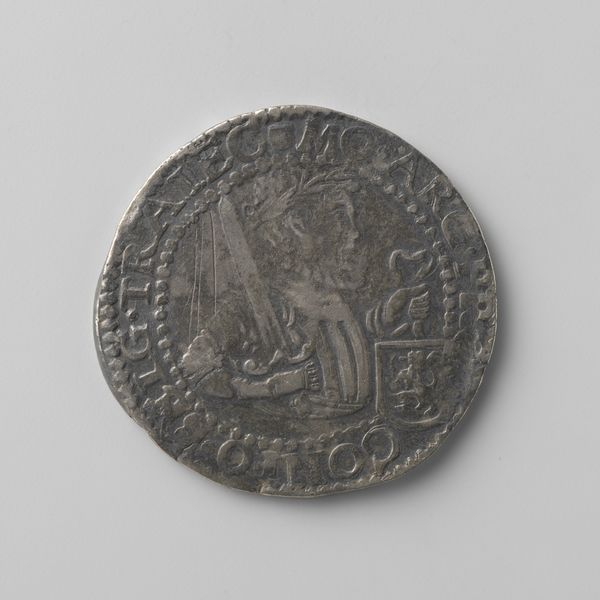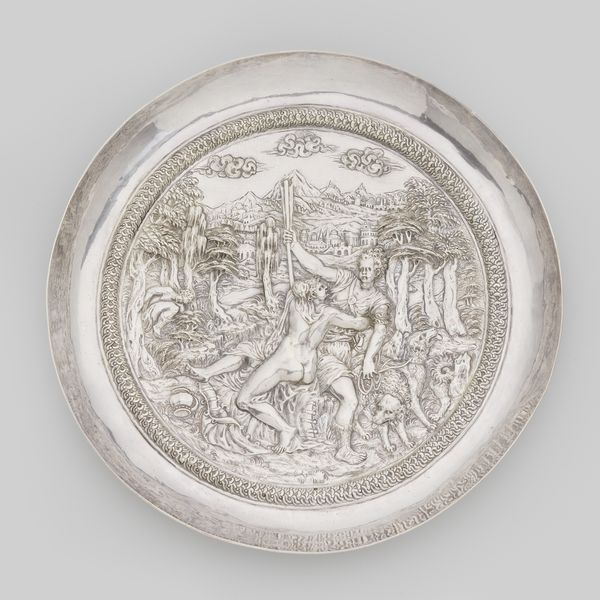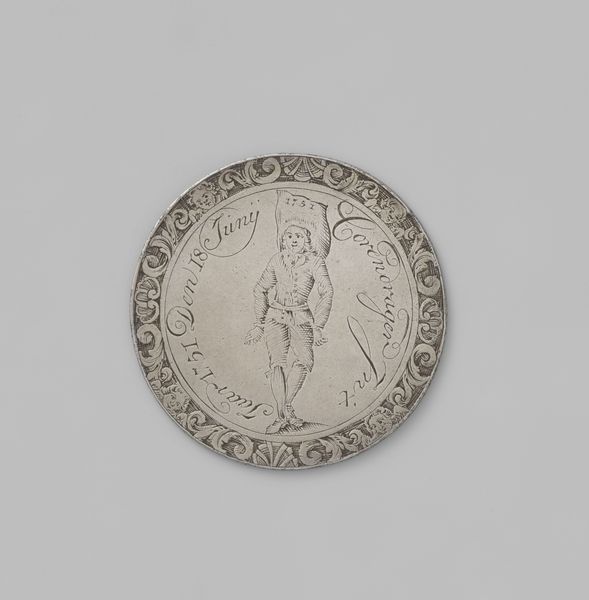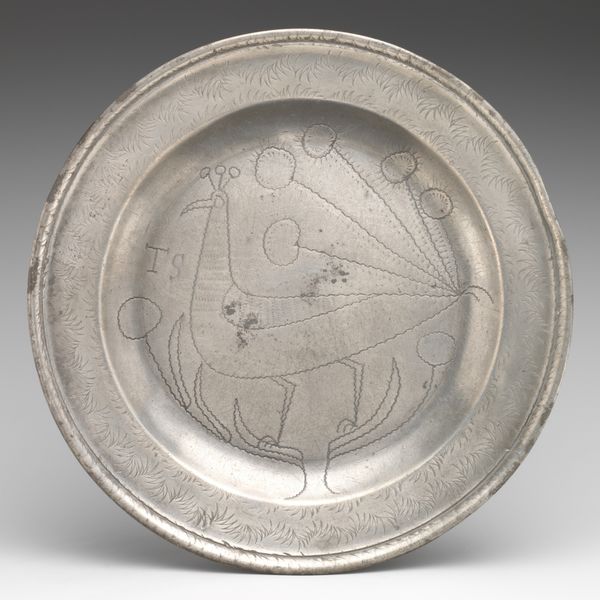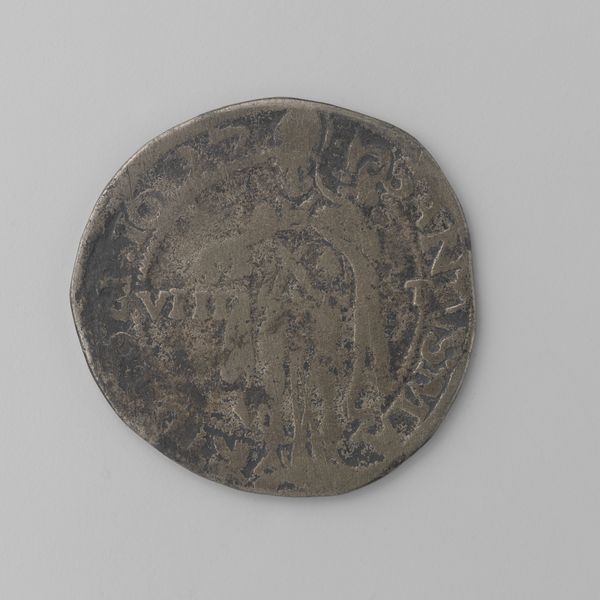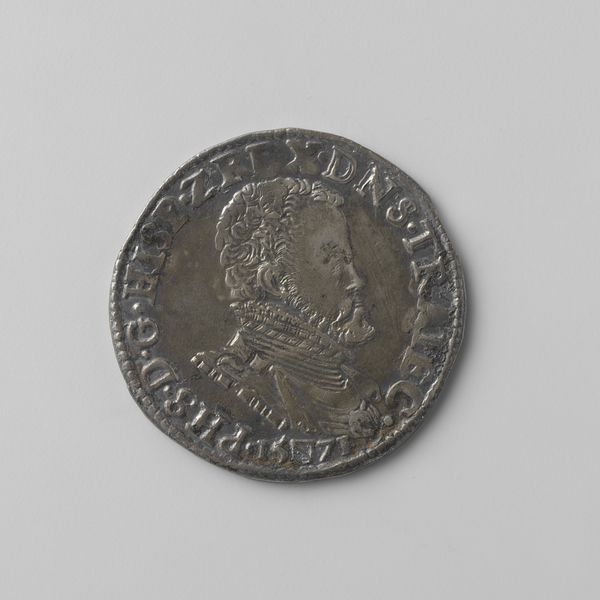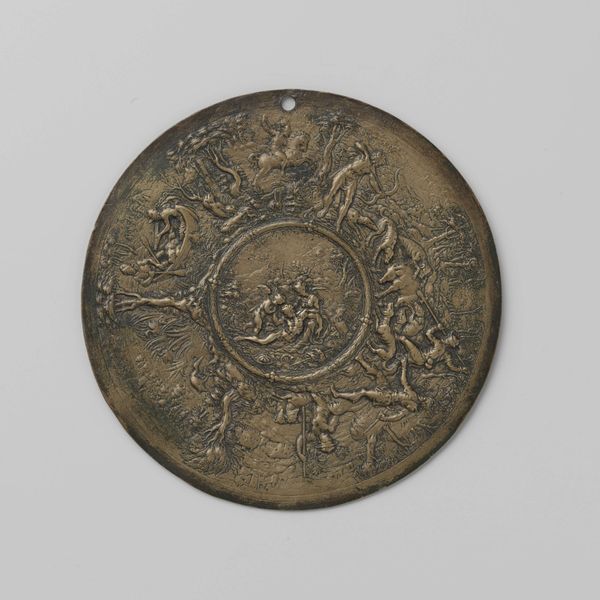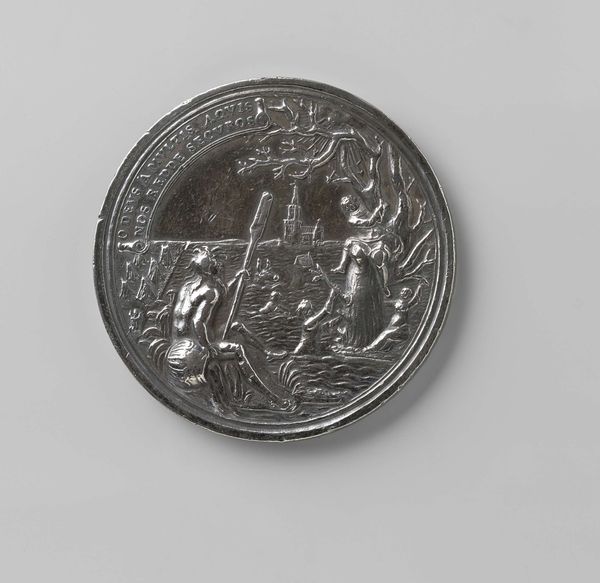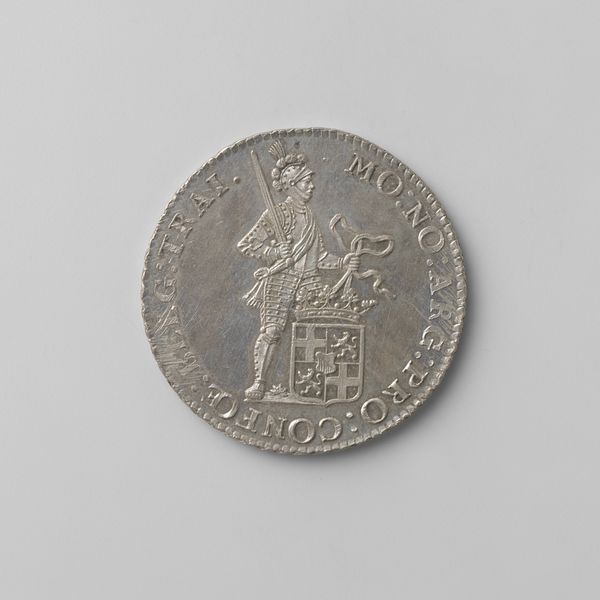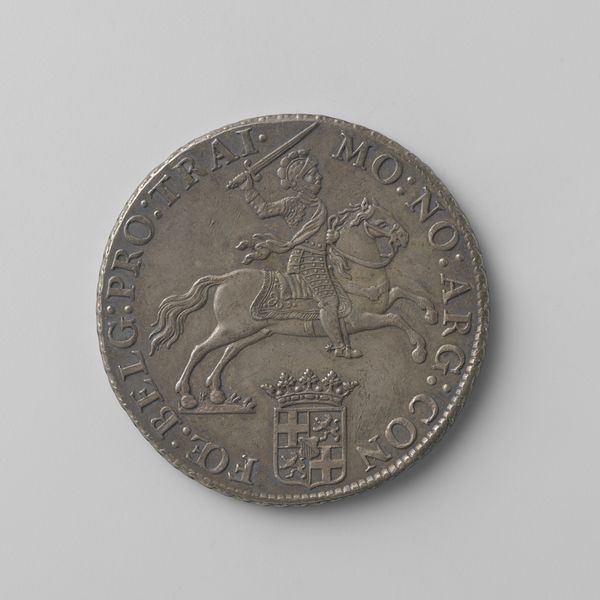
print, metal, ceramic
#
portrait
# print
#
metal
#
ceramic
#
figuration
#
ceramic
#
islamic-art
Dimensions: diameter 11 cm, height 1 cm
Copyright: Rijks Museum: Open Domain
Curator: Oh, my word, it’s so wonderfully austere, isn’t it? Like a medieval coin, yet holding court. Editor: Indeed. We're looking at the bottom of a tin-glazed earthenware plate, believed to date somewhere between 1620 and 1650. The title given is "Bodem van een Sultan-schoteltje versierd met medaillon," hinting at its origin or intended market. Curator: A sultan's little dish. It has an otherworldly feel, but also the weight of some historical power. What kind of narrative do you get from this artwork, in terms of its production and cultural place? Editor: It gives an interesting glimpse into the artistic exchanges of the period. This era saw a surge in global trade, so the circulation of imagery became easier, particularly patterns for decorative arts, in this case from the Islamic world. We must think of the cultural and economic role of ceramics at the time, luxury items meant for display. Curator: I think about it being at home, and think of my cat on the dresser with something like that. And someone back then has this. Is that strange? Editor: Not at all! This seemingly simple object served purposes grander than mere functionality. Beyond just aesthetics, they signaled cultural sophistication. The sultan riding the horse suggests power, authority, and the exotic other. Its very creation shows an awareness of Ottoman artistic traditions within Europe. Curator: The plate has this sort of echo...like you look in water. How much of Islamic culture could be properly absorbed via mere artifacts, or would people want to go learn? Do you think people made these with those thoughts in their heads? Editor: Perhaps a mix of genuine interest and colonial attitudes? I think we'd be remiss if we did not account for the politics of looking, then and now. This was not simple appreciation but part of an ongoing dialogue marked by power imbalances. Curator: Absolutely. It reminds me that art carries histories beyond the brushstrokes. Well, on that note... Editor: Quite right. This plate provides more to reflect upon than a clean finish.
Comments
No comments
Be the first to comment and join the conversation on the ultimate creative platform.
